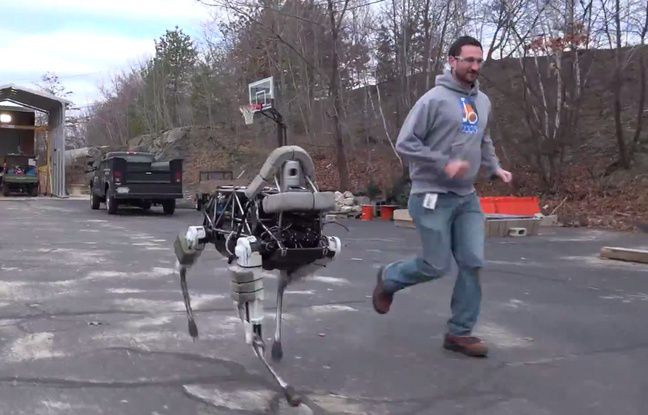Boston Dynamics’ New Robot Pup Has People Spooked

Boston Dynamics has been churning out variations of robotic animals for years. One of the company’s first prototypes, BigDog, was completed in 2005. Several improvements were made in the following years as the machines became faster and more efficient. Each new variation carried similarities to the last, but all were manufactured with the purpose of carrying supplies for the military. The company has now revealed a robot doggy called Spot, which is only half the size of his predecessors.
What’s so interesting about this new offering? After all, it’s more of the same, right? Wrong. Spot is designed to run in packs. Although just one of the machines may be cute, five or six together is a different story.
The LIDAR sensors carried atop Spot’s head allow it keep its balance when traversing the rough terrain for which it was designed, but they also allow it to avoid any obstacles encountered. When Spot meets up with one of his robot buddies, the two instantly align their strides. That’s something we haven’t seen before.
The goal of the dog’s programming is the eventual elimination of trial and error behavior, which results from periodic collision and realignment. The robot pups aren’t yet programmed to work together as a unit, and so these accidents will happen. In time, however, the dogs will be able to avoid one another completely. For now, a casual bump here and there will have to do.
According to Princeton biologist Iain Couzin, who specializes in collective animal behavior, the autonomous adjustment while moving is a form of social interaction. This capacity for interaction has quite a few people spooked, especially since Couzin took the idea for Spot’s ability from his research on locusts, which move in formation during plagues in order to avoid one another. However, Couzin is confident that Spot’s new ability holds untapped potential for the future of such robots.
“No matter how primitive, there’s no doubt that these interactions could enhance the decision-making capabilities of such robots when they must make their own, autonomous, decisions in an uncertain world,” said Couzin.
Either way, Spot’s behavior is just another example of robots being graced with more human, life-like movement and the potential to think on their own.

